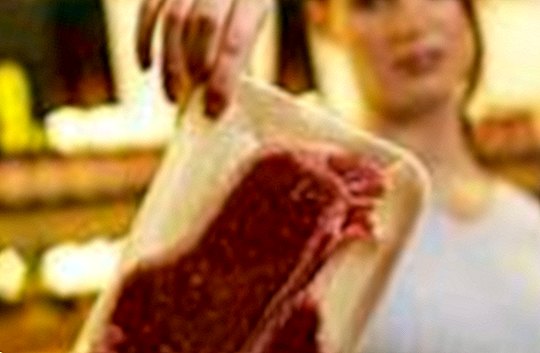Which food is still safe?

ask for
Hundred percent safety, there is usually only organic. In the case of conventional suppliers, the butcher around the corner is more reliable than the discounter. Quality is a matter of honor for most butchers. And about the origin and recipes, they give the customer information. The same applies to well-run meat counters in the supermarket. Everything should look appetizing, there should not be any cloths or pieces of meat lying around on the work surface. "Whether the staff is competent, you notice very quickly, if you ask," says Matthias Wolfschmidt, spokesman for the consumer protection organization Foodwatch (www.foodwatch.de). "If you receive no or only unsatisfactory information about the origin or preparation of the goods, you should not take the goods as a matter of principle."
Look more closely
"If you buy packaged meat or sausage - for example as a special offer - you do not only trust the data on the packaging," advises Matthias Wolfschmidt. Assess the content. Sausage should never be greyish or greenish in color, look greasy or have dried edges. Beef can have gray spots due to hanging, which are more noticeable with packaged meat than with loose meat. Important: Unpacked at home, the meat should appear red overall - otherwise you complain. If the meat already "floats" in the pack in its own juice - hands off. Pig or turkey should never have a greyish hue. Some shops use red light to make the goods look more appetizing. The best way to take the meat off the shelf and check under normal lighting, recommends the Hamburg Consumer Center. In doubt, do not buy.
Branded goods instead of no-name
Döner, meatballs, sausages or sliced meat from the snack - in fast food of unknown origin, superimposed meat and slaughter waste can hide well. Therefore prefer not to buy stews or pasta with meat filling whose origin is not clear. Unproblematic are products of well-known manufacturers - they have a reputation to lose. The price does not necessarily say something about quality. Due to the strong price war in the industry, there are also good goods often for mini-tariff.
Buy regional or organic
Grapes from Greece, strawberries from Spain, peppers from Turkey - government inspectors and Greenpeace regularly detect significant amounts of pesticide residues. Unfortunately, even in regional fruit, inadmissibly high levels of pesticides are found - but the burden is usually lower than that of imported goods. Consistently low pesticide residues contain fruits and vegetables from the greenhouse (under glass, pests can be controlled with less poison). However, greenhouse vegetables and lettuce (broccoli, lettuce, endive) may contain a lot of nitrate, which is converted into toxic nitrite in the body. In salad, remove the outer leaves and stalks, blanch vegetables to rinse out the nitrate. For children, wait for the outdoor season, buy winter and frozen vegetables or organic. Look for suppliers who seek to grow close to nature (eg "SanLucar", www.sanlucar.com). Further information in the Greenpeace guidebook "Essen ohne Pesticides" can be found at www.einkaufsnetz.org or by phone: 040/30 61 81 20.
Wash thoroughly!
Wash fruits and vegetables thoroughly before eating! According to the Federal Institute for Risk Assessment, in the case of fruits with a smooth shell (grapes, tomatoes), the water flushes off up to 70 percent of the residues.










